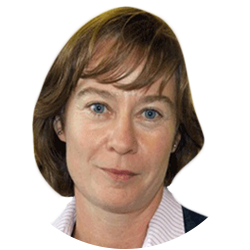
 Sharon Simpson, Educational Lead for Teaching and Learning, SSAT, illustrates how TEEP exemplifies – indeed, takes further – the aims and principles of the new SfTPD…
Sharon Simpson, Educational Lead for Teaching and Learning, SSAT, illustrates how TEEP exemplifies – indeed, takes further – the aims and principles of the new SfTPD…
I don’t often feel positive having opened DfE documentation! However, first glance at the Standard for Teachers’ Professional Development (SfTPD) July 2016, I was quite encouraged. Perhaps because it contained an opening quote from Dylan Wiliam: “Every teacher needs to improve, not because they are not good enough but because they can be even better”.
This is closely followed by a statement about teachers as “the most important profession for our nation’s future… ” which is more positive again and more closely aligned with the values we should hold of the teaching profession.
There are some standout messages in the SfTPD. The first is in statements such as “evidence suggests that a one day course as a stand-alone activity without a specific focus is unlikely to have an impact on student outcomes”; and Standard 4 of the 5 standards for PD stating “professional development should be sustained over time.”
However, we would add that while training days are an ideal opportunity to celebrate the successes of the previous year, we should move away from this being only about assessment successes and the learners’ achievement. It’s also about ensuring we build in a celebration of the experience and expertise of our teachers. Opportunities for teachers to reflect, discuss and evaluate teaching and learning are the lifeblood of success in a school.
This is where SSAT’s renowned teaching and learning programme, the Teacher Effectiveness Enhancement Programme (TEEP) comes into its own.
TEEP promotes high levels of staff collaboration, building a common language for learning within a framework underpinned by research into highly effective teacher and learner behaviours.
Level 1: over 3 days, with time to reflect and apply between days 2 and 3
Level 2: over 2 days: coaching and mentoring; deepening effective teaching and learning, with staff building a portfolio of their practice which can be shared.
Level 3: over 3 days, to achieve national training standard.
TEEP is built on teacher expertise, and is a core element of SSATs professional development offer, based on our ethos, ‘by teachers for teachers’. TEEP empowers teachers, over time, to revisit, re-learn and reflect upon existing practice to become more effective and take on board new ideas, using a cross-subject and cross-phase collaboration with colleagues. It is backed by extensive research, and translates research into effective classroom practice.
In September 2014 the Teacher Development Trust (TDT) commissioned Professors Rob Coe and Steve Higgins of Durham University, Philippa Cordingley of CUREE and Professor Toby Greany of the UCL Institute of Education, to conduct a review of what constitutes effective professional development for teachers. Their report Developing Great Teaching, Lessons from the international reviews into effective professional development[PDF] identifies ‘rhythm’ as a key feature of professional development.
I see this as the follow up, extension and consolidation of learning that the TEEP framework is designed to develop. I would call it the background ‘hum’ of learning activity, where teachers collaborate over time, towards a common purpose, using a common language for teaching and learning.
The background ‘hum’ of learning activity, where teachers collaborate over time, towards a common purpose, using a common language for teaching and learning
In fact the SfTPD uses language directly from the TDT report, stating that effective PD is ”iterative, with activities creating a rhythm of ongoing support and follow-up activities”, including opportunities to experiment, reflect and evaluate.
These opportunities are explicit in TEEP, with a 6-8 week window to experiment, apply and reflect between days 2 and 3 of the TEEP Level 1 training; day 3 specifically challenging teachers to reflect on their practice by evaluating their ideas, resources and planning. Level 2 deepens this reflection through a series of TEEP PEEPs, in which teachers work with a peer to explore and explain their planning for learning as evidence in their ‘portfolios’ – what worked, what didn’t and why – in order to inform their next steps.
Teachers aiming to become Level 3 national TEEP trainers must continue to build an extensive portfolio to evidence their practice over time. This cycle of plan, apply, reflect and review is explicit in TEEP.
We can see the synergies between the report findings and TEEP, from standard 2 – high quality academic research (upon which TEEP is based); standard 3 coaching and mentoring (as in our TEEP Level 2) and prioritised by school leadership (standard 5).
In their article ‘The power of professional capital'[PDF] Andy Hargreaves and Michael Fullan emphasise the powerful impact investing in collaboration is achieving in high performing countries. I remember listening to Fullan and Hargreaves several years ago using the analogy of ‘the squirrel’. Squirrels works hard, gathering the food they need to survive the winter – as individuals. Thousands of squirrels all independently doing the same job!
They liken this to teachers, across the country, in many schools, working hard – but without systems or structures to effectively share their skills, knowledge and experience collectively to create a positive impact upon their students. This building of social capital would use the group, working together, to best respond to the needs of students.
Fullan and Hargreaves cite Singapore as an example of educators who “give away their best ideas” to other people. Similarly, our TEEP schools provide strong, positive examples of intra- and inter-school collaboration, which have the power to transform educational outcomes for all children, rather than the children in one school or one class.
 As the SfTPD clearly states, professional development should have a clear purpose and link to student outcomes. The TEEP learning cycle has a clear emphasis on learning outcomes, focusing on how students are learning, setting clear learning intentions and success criteria, rather than focusing on completing a task.
As the SfTPD clearly states, professional development should have a clear purpose and link to student outcomes. The TEEP learning cycle has a clear emphasis on learning outcomes, focusing on how students are learning, setting clear learning intentions and success criteria, rather than focusing on completing a task.
Bridgemary School, for example, has experienced real transformation through its TEEP journey from special measures to ‘good’ in 18 months. Assistant headteacher Beccy Mountford’s description of this journey is “dedicated to the teachers who sit at training events and listen intently to people delivering their wonderful ideas, but think to themselves ‘yeah right, it won’t work at our school, they don’t know our school, they don’t know what we are up against’.
Focus on how students are learning, setting clear learning intentions and success criteria, rather than on completing a task
“This is about a journey from despair to elation… it is written to help teachers who need a little bit of hope…change can happen, I have witnessed it first-hand.” Bridgemary staff credit TEEP as one of the biggest impacts in the transformation. Their ongoing CPD uses TEEP to build regular, structured development for teachers which continues to build on and celebrates their success.
It is clear that the SfTPD raises questions about the pressures on all teachers, and about sourcing the time and money for ongoing professional development. But at leadership level there is no question about establishing and maintaining a focus on the core business of the school, which is to ensure the best outcomes for its learners.
Every week, we see this in practice in our TEEP schools. All Hallows Catholic College – a TEEP Champion School – demonstrates a focus on high-quality, consistent and sustained professional development. Ofsted commented in December 2014 that “The leadership of teaching is outstanding; due to rigorous monitoring of performance linked to a comprehensive professional development programme for staff.”
TEEP works. Find out more about the impact of the programme.
